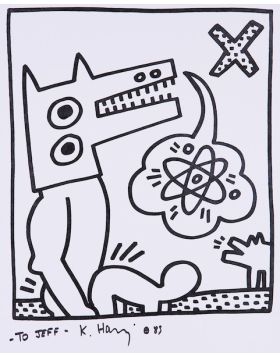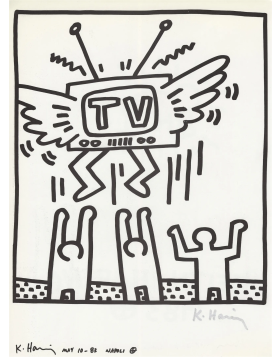
Thank you!

Keith Haring

Keith Haring: Art for Sale on Deodato Arte - Approaching the world of art as a child, Keith Haring drew strong inspiration from the images of comic books and their characters. In the 1980s he began working in many cities around the world, and it was during these years that he met Andy Warhol, who would establish him as an artist.
The artworks by Keith Haring are characterized by themes related to politics and society, addressed through the use of the iconic characters Radiant Baby, Barking Dog, and the stylized little men.
FOR COPYRIGHT REASONS THE IMAGES OF THE ARTWORKS ARE AVAILABLE UPON REQUEST. CONTACT [email protected].
-
-
-
-
-
-
-
-
-
-
-
-
-
-
-
Fertility Suite - Fertility #5
Keith Haring£2,483.65 VAT Margin (art. 36)VAT included
Products with VAT included show a price calculated with VAT tax, so the additional tax of 22% is already added to the price of these products.
VAT Margin
The products with VAT Margin apply the additional tax of 22% only on the margin, the difference between the price at which the product is purchased and the price at which the same product is resold.
13,7 cm x 12,1 cm
-
-
-
-
Eight Shoes
Keith Haring£2,141.08 VAT Margin (art. 36)VAT included
Products with VAT included show a price calculated with VAT tax, so the additional tax of 22% is already added to the price of these products.
VAT Margin
The products with VAT Margin apply the additional tax of 22% only on the margin, the difference between the price at which the product is purchased and the price at which the same product is resold.
29,8 cm x 29,8 cm
-
-
Artist Keith Haring - Biography
Keith Haring, the artist was born in Pennsylvania on 4 May 1958. He approached the world of art and drawing at an early age, thanks to the influence of his father, a cartoonist. Soon he showed a great interest in comics and in their characters.
In 1976 the artist enrolled at the Ivy School of Professional Art in Pittsburgh where he began studying graphic design for advertising. But he soon understood that it wasn't the path he wanted to follow and, thus, he abandoned his studies.
He spends a period doing various jobs during which he begins to cultivate his passion for art. After leaving his studies at the Ivy School of Professional Art, he moved to New York to study at the School of Visual Art. Here the artist began to make himself known as Keith Haring Street Artist by making Graffiti on the walls of the New York subway.
In a short time his simple and extremely recognizable style made its way into the common imagination.
Keith Haring - Street Artist
The years in which Keith Haring began to make himself known as an artist were the Eighties, a period in which the revival of painting was taking off in New York.
Innovative was the support used by young emerging artists, including Haring: the walls of the city and, above all, those of the New York subway stations that became canvases. From this arose a type of art, so-called public, which detach itself in a clear and provocative way from the art system, considered too elitist and selective.
For Keith Haring Street Art thus came the opportunity, like for artists belonging to the most marginalized categories (African Americans first and AIDS patients then) to be heard and noticed, by proposing a public art and therefore accessible to everyone. In this way, the traditional way of using art was subverted. The choice to use the city as if it were a vast canvas did not depend only on the artists' willingness to transmit their messages, often centered on committed themes, to as many people as possible.
Equally important purpose was to realize an art that was within everyone's reach and that did not create distinctions between high art and low art, as art institutions did instead.
The Success of Keith Haring's Street Art
In this renewed artistic climate, Keith Haring succeeds masterfully in putting into practice the theoretical bases of street art. With him and with other artists, political and social themes, often uncomfortable and very strong, return to occupy the role of undisputed protagonists of the works of art. These themes are conveyed by the artist through the use of a style made of stylized and essential figures with thick black outlines in contrast with the colorful characters.
The stylized men recall puppets that seem to come directly from a primitive world, coming back ti life, in all their simplicity in the contemporary frenzy of the big cities.
The figure of Keith Haring is thus consecrated as an artist: as a painter Keith Haring and, above all as a street artist, he will in fact have immense success.
In the fervent artistic climate of the Eighties , the step from the walls of New York to international recognition is short. He starts working in many cities around the world, both in America and in Europe, and also in Australia.
At this point he gets to know artists and celebrities including David LaChapelle, Annie Leibovitz, Grace Jones, Yoko Ono, Jean-Michel Basquiat and the timeless king of Pop Art Andy Warhol, consecrating himself so to the full-fledged Haring artist. Haring's extraordinary intuition was to open a shop in Soho, The Pop Shop, where he sold gadgets, T-shirt and reproductions of his works on various objects, so that his style and his art could reach everyone and everywhere.
What Haring cared about the most for his art was, in fact, to make it economically accessible, as it was visually accessible to whoever walked in the streets of many world's cities where his works were painted.
Unfortunately his career was brief because the artist became ill with AIDS (HIV) and Keith Haring died on February 16, 1990. After discovering that he was ill, in 1989 the artist decided to give life at the Keith Haring Foundation,still operating today, with the aim of providing assistance and help to both children and organizations involved in the fight against AIDS.
Keith Haring - Artworks: the Subjects of Haring
In his graffiti art, Keith Haring immediately dealt with issues related to politics and society.
In fact, he usually created graffiti that had as protagonists, on the one hand, public figures linked to the world of politics and, on the other, themes such as emancipation of homosexuals.
The Iconic Subject of Keith Haring's Art
Among the main subjects of Keith Haring's Works we can find the so-called jargon "figures".
His colorful men or rather colored stylized men have the unmistakable style of the artist who recalls the graffiti found in prehistoric caves, and are truly revolutionary.
The famous radiant boy (or the figures), thus becomes a constant in the artist's murals. The anthropomorphic figure of the man, in his extreme simplicity and essentiality, assumes the function of symbol and language that the artist needs in order to convey, in a seemingly simple way, very complex messages. One of these is the silence that characterized the increasingly worrying spread of AIDS. The Keith Haring's Art Figures therefore become so the artist's iconic symbol, making his works easily recognizable.
With this kind of Graffiti Haring finds the most representative subject of his art.
Today, in fact, the art of Keith Haring is famous in all the world and it is easily recognizable. The fact that men do not have a clearly defined sex is indicative. The homosexuality of the artist and the trail of prejudices and discriminations that he entailed led him to create characters with unspecified sex with the intent to promote greater community among men that did not depend on gender, sexual orientation or race.
Subjects Drawings by Keith Haring - Dog, Egyptian God Anubi
Another subject if that often appears in Haring's works is the dog. This animal acts as a reference to Anubi, the Egyptian God of death and known for having the body of a man and the head of a jackal.
The fact that in murals and Drawing by Keith Haring Dog is often represented while attacking the men, works as a reference to the Egyptian culture and to the double concept of life and Death.
Religion in Haring's ArtWorks
Even the theme of religion is often recurrent, usually depicted by a cross.
The artist grew up in a very religius family that immediately tried to impart him Christian teachings. However, soon enought Haring rejectd the excessively narrow and antiquated mentality promoted by Christianity.
What led him towards this clear position of rejection has been his being homosexual, a condition always denied by the Church and by its credo.
Drawings - Keith Haring: the Subject of the Crowd
Linked to television, central in Keith Haring's Artworks is the subject of the crowd that has a double meaning: positive, when the crowd is read as strength of more people united by the same cause, but also negative, when it is understood in the optics of collective massacres.
This last value refers to Haring's discovery of the outbreak of the war in Vietnam: a discovery that took place through television news and that had left the artist shocked by the horrors and despair shown.
Keith Haring: Artworks with the Nuclear Power Plants
In the artist's artworks we can also notice the nuclear power plants.
Always unfavourable to nuclear power plants, in his works he depicts them with huge snakes coming out of them. The purpose of these animals is to symbolize the monstrosity and danger of these nuclear power plants.
The Conflict with Technology in the Paintings by Keith Haring
These subjects are also joined by those linked to television and, more generally, to techonology.
In his works in fact one or more Little Men are depicted around technological devices such as televisions or computers.
Keith Haring has always had a rather conflicted relationship with the new technological equipment and with their influence exerted on men. He was convinced that sooner or later computers would take over man and his freedom to act. For this reason, the artist often depicts parts of this equipment, for example the antennas, like weapons attacking other characters.
Keith Haring - Graffiti become Famous Works
According to Keith Haring, graffiti aims not only to make his art easily accessible to everyone, but also to ensure that his messages reach as many people as possible: by doing so he eliminates the distance between art and the public altogether.
Moreover, as a painter Haring gets a truly remarkable success. However, his talent as a street artist is undeniable.
Below we will list the main Works with Graffiti that made Keith Haring famous.
Untitled - Keith Haring: Heart - 1982
Talking about the most famous works by the artist Keith Haring Heart is undoubtedly among the best known.
The drawing of hearts by Keith Haring made in 1982 represents two men dancing and holding a big red heart that beats under the notes of love.
The two men seem to dance disregarding the prejudices of the world and thinking only about their love. Among the works of Keith Haring Heart, this is one of the best known, because it fully represents his idea of love.
For Keith Haring essential Images and bright colors were the right way to convey his message and get to all those who observed his art.
This picture also represents the philosophy of the artist.
In the work the gender of the subjects is not revealed allowing an different readings. The two shapes represented in this masterpiece are in fact intentionally anonymous, making impossible to define their gender or race and so to create barriers of any kind.
The latter indicates precisely the no-consideration of the inherent prejudices of gender and for this reason the artist has had enormous diffusion in the homosexual world.
It's therefore evident that in his works Haring makes extensive use of both colored and white/black men to talk about themes related to love, understood in all its forms and nature.
With the heart Keith Haring therefore reaches one of the many apexes of which his brilliant artistic career will be studded.
Racism in Keith Haring Artwork: Free South Africa - 1985
Another themes that was very important for the Artist Keith Haring was that of racial discrimination and cultural submissions that plagued Southern Africa in those times.
In 1985, to make his contribution to eradicate these injustices, he created a work which, like all the others, did not have a title, but was nicknamed Free South Africa. This drawing represents two men: one black with a clearly larger outline and a white one that despite being decisively smaller, holds the first one on a leash.
For Keith Haring this work highlighted with irony the submission of a superior race both from a numerical and a physical point of view compared to the tyrants who imposed themselves to dominate it.
He used his reputation to create a popular protest campaign by reproducing that image on posters, postcards and t-shirts. By involving citizens, well-known personalities and politicians, soon the news went around the world increasing the knowledge about what was happening in South Africa and raising awareness.
Keith Haring's Graffiti: Berlin Wall - 1986
One of the most famous and significant works by Keith Haring is the mural created on a section of the Berlin Wall.
In 1986, the Artist Keith Haring was now very popular also in Europe, in fact that year he was contacted by Mauermuseum, the museum who was in charge of documenting the history of the Berlin Wall.
The young American writer, famous for his spirit of solidarity and freedom, willingly accepted this task.
For Keith Haring, Berlin Wall became an opportunity to symbolize the union between East Germany and West Germany, a beautiful example of how art can be a means of expression of thoughts free from every obstacle.
The realization was actually quite fast. First his assistants spread a yellow base on the 300-meters-long section of the wall.
Then Keith Haring painted the Pop Art Little Men in a row all toghether, holding hands and feet, to form a human chain. The subjects of this masterpiece were of two alternate colors, namely red and black, which combined with the yellow background, represented the colors of the German flag.
With his Graffitism Keith Haring, in this case, wanted to send a message of peace and unification, since that wall was an obstacle to freedom.
Unfortunately, the drawing of the artist was smeared the day after its realization with a grey paint, probably as a sign of protest for the American nationality of the painter.
Moreover, Keith Haring was aware that this Work would be temporary, as happens with graffiti that is often covered by other drawings.
The sentence by Haring was famous: "I want to destroy the Wall of Berlin by painting it". As we all know a few years later this happened.
Mural by Keith Haring - Crack is Wack - 1986
Keith Haring's Artwork "Crack Is Wack" was created by the Pop-Art Artist in 1986 on the wall of a handball field in Harlem, New York City.
The position he chose to create his work was designed with the for the purpose to be seen by as many people as possible, in fact it could also be admired from the FDR Drive, a limited access panoramic road on the east side of New York City.
The Haring Artwork's explanation "Crack is Wack" lies in communicating and bringing out the seriousness of a widespread problem in New York in those years, namely the Crack.
In the Murals of Keith Haring a Crack pipe is depicted at the base of the drawing, from which comes a cloud of smoke with the message "Crack is Wack" at the centre of it.
All around it are depicted symbols such as the skull, large in size to symbolize death, which is devoured by the demons of addiction. There are also banknotes that burn to signify the waste of money.
The artist was very keen on this cause because he was personally involved, since his studio assistant suffered from such addiction. This Keith Haring's Mural is indeed inspired by him, and wants to be a cry of protest towards a government that had underestimate this problem .
Haring against the shadow of AIDS: Rebel With Many Causes - 1989
Keith Haring in the late 80's was a Pop Art Artist and an established activist. One of the causes he cared about the most was the AIDS crisis that was rampant in New York, but that the government underestimated.
The Paint "Rebel With Many Causes" of 1989 wanted to underline the indifference with which this problem was faced up.
The three Haring's Stylized Little Men that appear in the drawing covering their eyes, mouth and ears are sending a very clear subliminal message: I don't feel the pain, I don't see the pain, I don't talk about the pain.
The artist, as known, was an homosexual, which led him to find himself fighting this disease in first person, besides the fact that many of his friends and collaborators didn't be able to survive to AIDS.
Keith Haring Print wanted to sensitize citizens and especially the government, too slow to deal with this social problem, which will be also the cause of his death a year later.
1989 Tuttomondo - Keith Haring - Mural
The Mural by Keith Haring in Pisa "Tuttomondo" has been the last great work of the American artist.
An example, this one, of how with graffiti Keith Haring expresses his enormous representative strength.
Tuttomondo, Haring's final testimony of His Street Art, was built on a wall of the Church of Sant'Antonio Abate in June 1989, shortly before his death, and is still well preserved.
Tuttomondo by Keith Haring is also the only work to which the painter gave a name, perhaps because he was aware of the fact that was his only work born to be permanent.
This artist left his mark in history, and even if his works were born to have a short life in general, he knew how to make his ideals immortal. This great masterpiece was created as a result of Keith Haring's meeting with a young Pisan student in New York, who invited him to spend time in the Florentine city.
Right there the artist decided he would make his works on the only available wall, the one of the church, finding an agreement with the municipality and the pastor of the convent.
This is the only one of Keith Haring's works that was not realized in one day, but rather in almost a week. He took care of the whitening of the wall, which had been semi destroyed by the bombings of the Second World War, and painted the silhouettes of its Black Little Men.
In the following days he colored them with the help of some students and the artisans of a study of local paints, which made available the colors necessary for the realization of the Mural Tuttomondo.
On this great masterpiece are depicted 30 figures of great vitality and bright colors that represented common aspects of life and celebrates freedom and peace in the world.
At the centre of the Mural, Pisa is represented with the Pisan cross, symbol of the city, made by four shapes united in life, and all around figures of animals to symbolize the need of contact between men and nature.
In the Tuttomondo Keith Haring's Mural there is a woman with a child and a man with a television instead of a head, through whom he wanted to highlight how much the technology was changing the world. At the top we could see scissors representing the "Good" that cut a snake in half, symbol of evil.
Keith Haring - Art For Sale: Original Signed Artwork
From us you will have the guarantee to buy Keith Haring's Original Art at the gallery of modern and contemporary art most known in Italy.
On our Art E-commerce you can find only original Keith Haring Art for Sale with certificates of authenticity and signed by the Artist.
You can choose original artworks for sale with prices and value for:
How to Buy Keith Haring: Price Request
If you like artwork of the graffiti's artist Haring you can browse this section dedicated to him.
On Page of Works you must click on "Show Price" and you'll get instantly Keith Haring price and value and do not hesitate to contact us by sending an e-mail to [email protected].
You will have the opportunity to purchase the works of the artist to add to your private modern art collection or to use as a piece of furniture for prestigious environments.
Have one of your own at home Graffiti Art of Keith Haring means having a timeless artwork.








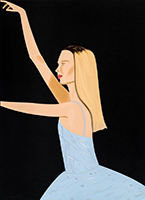
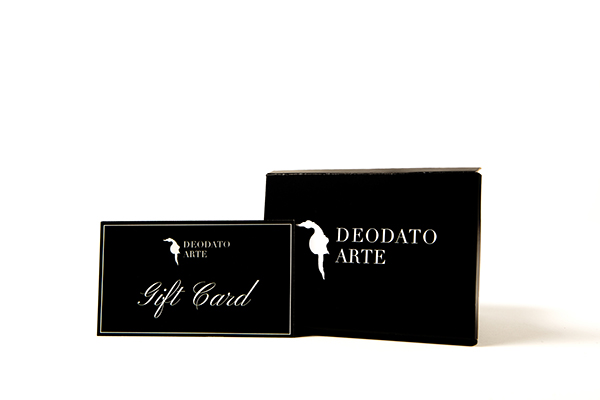
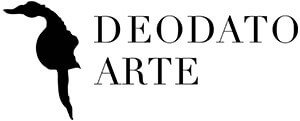
 Register
Register Wishlist
Wishlist Contact Us
Contact Us


